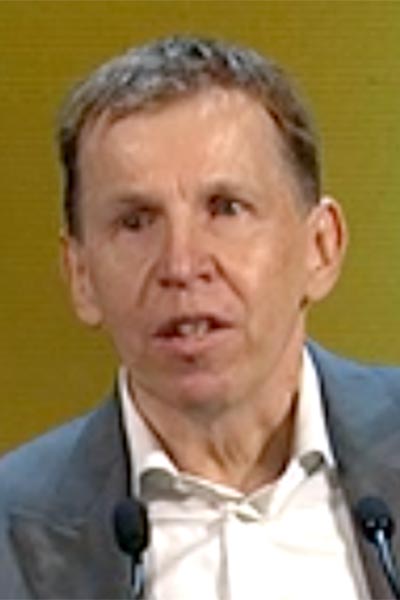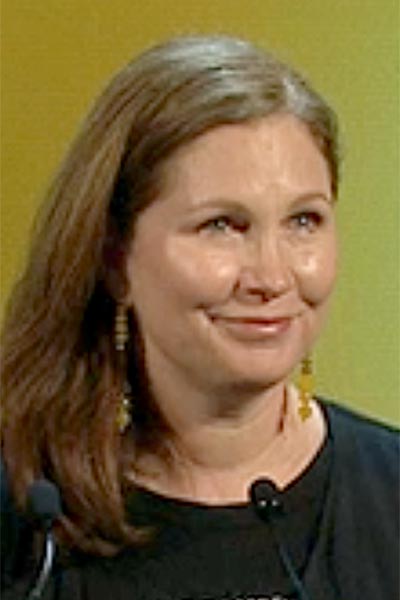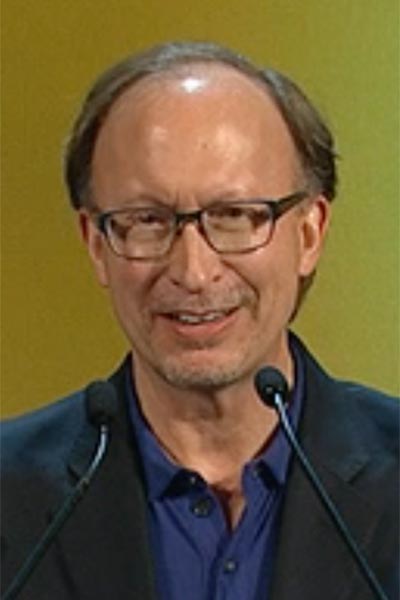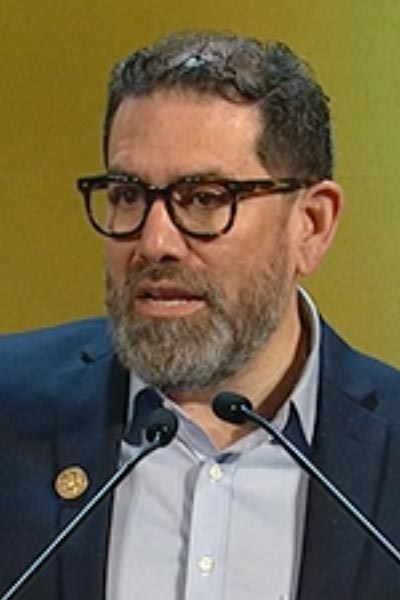Plenary speakers explore advances toward precision medicine for immuno-oncology
A panel of four researchers discussed the latest advances in immuno-oncology, including developments in the understanding of immunotherapy modalities, efficacy, and combination strategies during the plenary session Precision Medicine for Immuno-Oncology and the Promise for the Future on Tuesday, April 12.

Ton N. Schumacher, PhD, FAACR, Netherlands Cancer Institute, began the session with a discussion of T-cell reactivity and how cancer immunotherapies influence intratumoral immunity in cancer.
Taking an engineering-based approach to precision immuno-oncology, Schumacher and his colleagues use PDTF (patient-derived tumor fragment) technology to bridge the gap between mouse models and translational research.
“We use tumor ‘avatars,’ or little tumor fragments that we culture in the lab, and try to understand the effect of immunotherapeutic intervention on intratumoral immunity in human cancer lesions,” he said.
Using this technology, Schumacher and colleagues are exploring how PD-1 blockade modulates intratumoral immunity.
“What the data show is that PD-1 blockade reactivates intratumoral immune cells, and this reactivation is predictive of clinical response,” he explained. “Importantly, there are distinct ‘immunotypes,’ perhaps reflecting different tumor-reactive T-cell pools. And we’ve been able to show that intratumoral reactivation in response to PD-1 blockade is, at least in part, due to the activity of dysfunctional, or exhausted, T cells, and this may mostly be a translational response and not so much a transcriptional response.”

Shannon J. Turley, PhD, Genentech, Inc., discussed research examining stromal-immune interactions in health, inflammation, and immunotherapy.
“As immunologists, we’ve known for many years that lymphoid tissues are where immune responses get started and are also reactivated,” Turley said. “It happens that the lymphoid tissues essentially recruit immune cells—the tissue stroma provides growth factors and also sets up the architecture to foster really healthy immune responses. But we don’t think the role of the stroma is restricted to the lymphoid tissue. We think that the stroma is probably playing very similar roles in non-lymphoid tissues where many of the cancers begin and grow.”
Turley and colleagues are investigating whether the stroma can be modulated in order to improve patient outcomes in different immunotherapy settings.
Using single-cell genomics, it has been demonstrated that human and mouse pancreatic tumors, as well as other cancer types, contain a TGF-beta activated cancer-associated fibroblast (CAF) population with a unique marker called LRRC15.
“We think that this cell population arises in response to TGF-beta and potentially other cytokines,” Turley said. “And, interestingly, the TGF-beta-activated gene signature in this cell type is associated with lack of response to immunotherapy, at least to anti-PD-L1, in multiple cancer types, and this is mostly true for immune-excluded tumors where T cells are sitting in close proximity to these CAF cells.”

Thomas F. Gajewski, MD, PhD, University of Chicago, discussed the impact of germline and microbiome variants on immunotherapy efficacy through modulation of myeloid cells.
“We’ve been working to understand the biology of the T-cell-inflamed tumor microenvironment, which is characterized by a range of immune cells, including CD8-positive T cells and chemokines, some of which are responsible for recruiting those T cells into the tumor microenvironment,” Gajewski said. “A conundrum at the time when we started thinking about this was: Why do these tumors exist if they have an immune infiltrate?”
The answer, he said, came from understanding that the tumors also have dominant activity of negative regulatory pathways, including the PD-1/PD-L1 axis, which has been a successful therapeutic target.
“On the other extreme, the non-T-cell-inflamed tumors—cold tumors, or immune deserts—lack any of these factors,” Gajewski said. “And we think it’s basically an alternative mechanism of immune escape by cancer to keep the immune cells out. That can be a dominant phenotype and one that I think is important to understand, so that we can overcome that cold tumor phenotype and establish dynamic interactions between the tumor microenvironment and infiltrating T cells.”
Gajewski showed that the T-cell inflamed tumor microenvironment is regulated by the composition of the commensal microbiota and by inherited germline variants in immune regulatory genes, in addition to tumor cell-intrinsic events, and that each of these factors can influence functionally important myeloid cells. “Knowledge of these parameters is guiding opportunities for therapeutic intervention,” he concluded.

Luis A. Diaz Jr., MD, FAACR, Memorial Sloan Kettering Cancer Center, shared research looking at tumor intrinsic features of immunotherapeutic response to PD-1 blockade, specifically at whether treatment of mismatch repair-deficient (MMRd) tumors with anti-PD-1 might unlock a potent antitumor response.
“Tumor intrinsic genotypes like MMRd, polymerase epsilon deficiency, and high tumor mutational burden are highly associated with, and predictive of, exquisite sensitivity to checkpoint blockade,” Diaz said. “Recapitulation of the MMRd genotype may be a strategy for converting cold tumors into immunogenic tumors and provides further evidence that tumor intrinsic features are critical elements of tumor immunogenicity.”
Future data, he predicted, will reveal that preoperative therapy or treatment of occult disease will pave the way for immune-ablative therapy that will replace the need of surgery, chemotherapy, and radiation for many tumors that harbor these genotypes.
More from the AACR Annual Meeting 2025
View a photo gallery of scenes from Chicago, continue the conversation on social media using the hashtag #AACR25, and read more coverage in AACR Annual Meeting News.

